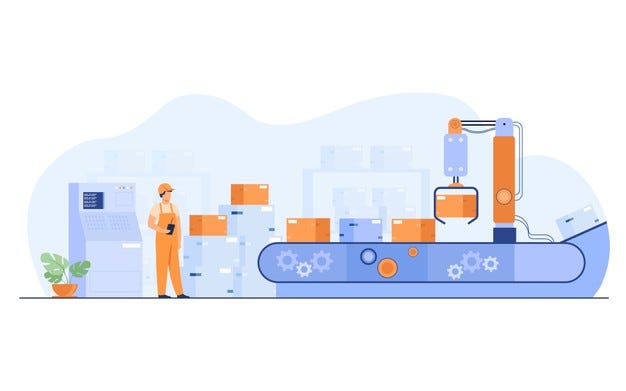Outsourcing offers businesses the opportunity to focus on their core competencies while freeing themselves from time consuming tasks. When you have a huge demand for workforce and services, outsourcing can help you meet those demands. Outsourcing also gives your business continuity since the resources are not placed in a single location.
It can be difficult to operate a business with a limited budget but it doesn’t have to stop you from expanding. One of the benefits of outsourcing is that you save on costs in the aspect of quality and control. Outsourcing provides your business with access to expert professionals and technology. You may be outsourcing for one of the following reasons:
- You want to lessen your operating costs
- Your employees have so many time-consuming tasks that they cannot fit the additional tasks to their schedule anymore.
- You have staff working in different time zones so outsourcing won’t harm your current set up
- There’s lack of specific expertise within your organization
- Outsourcing allows opportunities for cost savings
- You have little space for accommodating a new in-house team
Outsourcing comes in different forms and is dependent on the needs of your business. In this article, we shall take a look at the different kinds of outsourcing.
- Types of Outsourcing
- Professional Outsourcing
- Business Process Outsourcing
- IT Outsourcing
- Manufacturing Outsourcing
- Process-Specific Outsourcing
- Operational Outsourcing
- Project-based Outsourcing
- Multisourcing
- Choosing The Right Outsourcing For You
Types of Outsourcing
There are different types of outsourcing to choose from. Your choice will depend on the type of job you plan to outsource. In order to better decide which outsourcing type to choose, you need to understand each and how they work.
1. Professional Outsourcing

A good example of professional outsourcing is software development. Your company is developing a new mobile app but you don’t have an iOS or Android developer in your company. In order to fill the need, you will hire software engineers.
In professional outsourcing, you transfer complex tasks to a professional. The task requires additional training or a professional license. With professional outsourcing, you only pay for the services the professional will provide. Professional outsourcing could include legal, accounting, purchasing, and administrative jobs.
Professional outsourcing offers businesses high cost savings because you are paying only for the services to be provided. Also, you don’t have to worry about shelling out cash for benefits and incentives. In addition, professional outsourcing helps reduce overhead costs. No need to worry about office space, supplies, computers, and more.
Moreover, professional outsourcing gives you access to a global talent pool. Maybe the location you are working in lacks lawyers, accountants, or IT professionals. Of course, you wouldn’t settle for someone with mediocre skills.
2. Business Process Outsourcing

Business process outsourcing is the most common type of outsourcing. This is where you hire a third-party provider to handle your business process. The most commonly outsourced tasks for BPOs are repetitive tasks like customer support and administrative roles. Most BPOs are designed to fill business functions that could be either technical or nontechnical.
BPOs are often divided into back office and front office services. The former includes internal business processes like billing or purchasing while the latter includes marketing and tech support.
Businesses cite various reasons for outsourcing to a third-party provider. The biggest reason is to cut down on costs. Most companies outsource to reduce potential costs for in-house labor, staffing and training, and for the workspace for local employees.
By outsourcing to a BPO, businesses can achieve some kind of flexibility in performing their critical functions. It will also enable them to expand their global presence. In this manner, they can improve their speed and efficiency. For example, they can transfer records management functions to a provider who can automatically index documents.
3. IT Outsourcing

Outsourcing IT services has gained huge ground over the years. As technologies like cloud computing, robotic process automation, and artificial intelligence are likely to dominate industries in the coming years, more companies are likely to rely on IT sourcing. Data from Statista reveals that by the end of 2021, the overall value of outsourced IT services will exceed $413.72 billion.
Functions like software and app development require a great degree of specialization. If you don’t have someone on your team who can do that task, outsourcing is a great idea. One of the benefits of outsourcing IT is that you can hire developers offshore at a fraction of the cost of hiring an in-house developer.
With IT outsourcing, you get access to a developer or team of developers who has the tools to get started right away with your project. As a result, you don’t have to upskill your current team. You can pass on software development to the professional so you can focus on other tasks.
If your office is located in a remote area with limited skilled professionals, outsourcing your IT needs can be a good option as you will be hiring trained, certified, and highly qualified individuals which might not be accessible in your location.
4. Manufacturing Outsourcing

If your business is engaged in the design and manufacture of physical products, manufacturing outsourcing can provide you with many financial benefits. The provider can produce your goods at a cheaper price compared to producing it in your home country. Paying factory workers and the cost of raw materials is massive. That is why most companies choose to outsource manufacturing.
If you buy an iPhone, you will see in the box “designed in California.” This is because the actual creation of components is done in different countries because the cost of labor and raw materials is much cheaper. With manufacturing outsourcing, you don’t have to worry about infrastructure and equipment.
Large companies like Apple, H&M, and Ikea outsource their manufacturing needs for cost reduction. After designing their product, the tech giant outsources to China for mass production. Furniture giant Ikea does the same with their furniture so they can save on cost and increase profitability.
5. Process-Specific Outsourcing

Process-specific outsourcing involves the transfer of certain tasks or internal procedures. This is quite common in the industry nowadays. Retail companies often outsource their delivery service to a third-party service provider. The outsourced firm has expertise in things like delivery timeline, product costs, and customer contacts.
Fulfilling customer orders can be time-consuming and may take your staff away from what they should be doing. With process-specific outsourcing, you will be able to cut costs and have time with your core business functions. This type of outsourcing will also help save time in completing orders.
6. Operational Outsourcing

Operational outsourcing is usually associated with the manufacturing industry. This is when some operational tasks and steps are outsourced in order for the end result to be achieved properly. For example, repair of equipment and maintenance of machines is usually outsourced to a 3rd party.
Operational outsourcing can either be full, targeted, and temporary. Full and temporary models come with contracts while targeted involves the third-party provider working alongside your in-house team.
7. Project-based Outsourcing

Juggling from one project to another can be tedious for your team. Due to the lack of focus on each project, the quality of the output can be compromised. If you don’t have enough people for the project, your best option is to outsource.
Project-based outsourcing can help you generate savings by limiting the amount of time required to complete the project. In addition, you can get expert help from the outside since you don’t have help from your team. Another advantage of project-based outsourcing is that you do not need to exert effort in trying to train someone to work on your project.
Moreover, letting a specialist handle your project will result in quicker turnaround time. Finally, hiring someone who specializes in your type of project will result in quality output.
8. Multisourcing

Multisourcing is most applicable in businesses with high specialization and complexity. It combines the outsourcing output from dedicated specialized companies and aggregate third party providers to create a finished product.
This type of outsourcing is focused on outcomes by partnering with other providers. However, multisourcing requires a comprehensive strategy and a network of governance and relationships.
Choosing The Right Outsourcing Model
Whether you are scaling or expanding your business, finding the right outsourcing model is a must. By working with the right partner, you can realize all the benefits of outsourcing. However, you need to consider several factors before making a final decision. It’s important not to rush things. Here are the steps on finding the right outsourcing model for your business.
1. Be clear with your scope of work
Before searching for a potential outsourcing partner, create a clear scope of work. You have the responsibility to determine business goals, your business needs, and the best possible solution to achieve your desired outcomes. If scope of work sounds too technical for you, start by answering these simple questions:
- What is your exact need?
- What could be the best possible solution?
Answering these two questions will help remove any vague requirements for your outsourcing partner. “Create a mobile app that customers will love” is too broad a goal for you and your partner. You cannot expect to see the best outcome with such a vague goal. If you want to yield the best results, you need to be extra specific with your goal.
2. Consider Hiring Experts
After writing the scope of work, you can start reaching out to potential partners. Shortlist three to five vendors based on the following criteria:
- Technical expertise
- Skillset
- Access to technology
- Experience
Technical expertise is often overlooked but is crucial to the success of an outsourcing partnership. It’s alright to outsource to a partner with experience in more technologies as this could translate to better quality for your projects.
3. Check Their Market Reputation
When looking for an outsourcing partner, you should always look for quality. You can’t afford to work with a partner who always misses their deadlines. It is important to always check the reputation of the outsourcing firm you plan to work with. Nowadays, there are platforms like Clutch and Goodfirms, where you can check out reviews from their previous clients.
You can connect with their past clients to have an idea on their experience with the outsourcing company. Once you are confident about their market reputation and ability to deliver your requirements on time, you can hire the outsourcing company already.
4. Communicate Clearly About Your Budget
One of the factors that may discourage you from outsourcing is the cost. If you are looking for superior and quality service, expect the cost to be higher than the average. Before talking to a prospective outsourcing partner, determine your budget first and decide how much you are willing to invest.
Also watch out for hidden costs and fees. Before signing a contract, make sure that all the charges are laid out.
5. Protect Your Data and Intellectual Property
In a digital age, data privacy and security should be your utmost concern. When outsourcing, you will be sharing sensitive information to your partner. If the data is not managed properly, it could be mishandled and the sensitive information could be used wrongly.
Ensure that your proposed outsourcing partner will have you sign a nondisclosure agreement with your chosen partner before sharing sensitive information. Also, check if the outsourcing firm makes regular network and security audits in their workplace. Find out if they are using specific tools that will protect all your data and prevent it from landing in the wrong hands.
6. Be agile
The needs of customers are constantly changing so to accommodate those changing needs, you need to utilize agile methodologies. It offers a highly collaborative environment and delivers quick results. If you aspire to be an industry leader, work with a vendor who follows agile methodologies to allow them to adapt to the changing customer requirements.
7. Choose A Flexible Partner
During your partnership with the outsourcing firm, there might be urgent requirements or problems that may arise. Your chosen partner should have the flexibility to deliver results at the soonest possible time.
Flexibility is most important if your partner is located in a different time zone. They should be able to serve urgent requirements.
These are the different types of outsourcing that you can consider for your business. It all boils down to your budget and business needs.
Why Outsource With airisX?
By outsourcing to a leader like airisX, you will be able to scale up quickly by getting the right resources, processes and technological infrastructure. No matter what your scaling requirements are, airisX will give you the best optimised solution and you will be able to focus on delighting your customers. Your back office operations will be simplified, giving your users a high-quality experience.
The most important advantage of working with airisX is that we enable you to stand out from your competition by providing you with a sharply differentiating customer experience and best practices, which is the result of working with some of the world’s biggest and disruptive companies!
